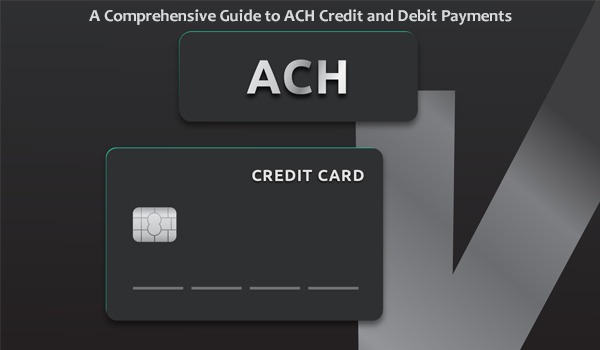
Introduction
In our digital age, making payments and getting paid has never been easier, thanks to Automated Clearing House (ACH) payments. But what is this system that's quietly revolutionizing money transfers? Let’s explore the ins and outs of ACH payments, including how they work, their benefits, and how you can make the most of them.
Overview of ACH Payments
What are ACH payments?
Simply put, ACH payments are electronic payments that move money from one bank account to another through the Automated Clearing House network. They can be either credit (sending money) or debit (receiving money) transactions.
The history and evolution of the ACH network
The ACH network has been around since the early 1970s, starting as a way to replace paper checks. Over the years, it has evolved with technology, becoming a faster and more reliable way to process transactions.
The role of the National Automated Clearing House Association (NACHA)
NACHA manages the ACH network and works to establish fair and consistent rules for ACH payments. They ensure the system runs smoothly, securely, and efficiently.
Importance of ACH Payments
Benefits for businesses and consumers
For businesses, ACH payments are cost-effective and efficient. For consumers, they offer convenience and reliability, reducing the need for paper checks.
Comparison with other payment methods
Unlike wire transfers or credit cards that might have higher fees, ACH payments are generally cheaper and more straightforward. They offer a good balance between speed and cost.
Current trends in ACH payments
Lately, there's been a surge in ACH payment usage, partly due to the rise of online banking and e-commerce. The ease of scheduling recurring payments is also a significant factor.
Understanding ACH Credit Payments
Basics of ACH Credit
An ACH credit sends money to another bank account. It's initiated by the sender, making it a popular method for businesses to process transactions like payroll.
Key participants in an ACH credit transaction
The main players are the originator (sender), the originator's bank, the recipient, and the recipient's bank.
Types of ACH credit payments
Common types include direct deposit for payrolls, tax refunds, or business-to-business (B2B) payments.
Setting Up ACH Credit Payments
Steps for businesses to send ACH credit payments
Businesses need to gather banking information, obtain authorization, and use software that supports ACH payments to initiate transfers.
Common uses of ACH credit payments
Besides payroll, these include paying suppliers and vendors, tax payments, and transferring funds between accounts.
Security measures and fraud prevention
Using encryption, fraud detection tools, and following best practices can help secure ACH credit transactions.
Advantages and Considerations
Pros of using ACH credit for businesses and individuals
ACH credit payments are reliable, have low processing fees, and can handle large transaction volumes.
Potential fees and processing times
While fees are generally low, processing times can vary, typically taking 1-2 business days.
Best practices in managing ACH credit payments
Stay informed about NACHA guidelines, use reputable payment processors, and regularly audit your ACH transactions.
Exploring ACH Debit Payments
Fundamentals of ACH Debit
With ACH debit, funds are pulled from a bank account. It's commonly used for bill payments and subscription services.
The main players in an ACH debit transaction
Similar to ACH credit, the key participants include the originator, the recipient, and their respective banks.
Different types of ACH debit transactions
These include consumer bill payments, subscription fees, and insurance premiums.
Implementing ACH Debit Payments
How businesses can set up ACH debit for recurring billing
Companies must obtain permission from customers, provide clear terms, and ensure secure handling of bank information.
Consumer authorization for ACH debit
Authorization can be given through a signed form or an online agreement, clearly stating the terms of the debit payments.
Measures to safeguard against unauthorized debits
Implementing verification processes and promptly addressing unauthorized transactions can protect both businesses and consumers.
Benefits and Drawbacks
Reasons to choose ACH debit payments
ACH debit transactions are convenient for recurring payments, reduce the risk of late payments, and are generally secure.
Common concerns with ACH debit and how to address them
Ensuring sufficient funds in the account and understanding consumer rights can mitigate concerns.
Comparing processing times and costs to other payment methods
ACH debit usually offers lower fees and comparable processing times to other electronic payment methods.
Regulatory Framework and Compliance
ACH Rules and Regulations
NACHA's Operating Rules provide a legal framework for ACH transactions, ensuring security and reliability.
Key legal and regulatory considerations for ACH transactions
Compliance with NACHA rules, as well as state and federal regulations, is crucial for all parties involved.
Compliance requirements for businesses
Businesses must adhere to NACHA rules, including authorization requirements and transaction processing standards.
International ACH Transactions (IAT)
Understanding IAT and how it differs from domestic payments
IAT allows for cross-border ACH transactions but comes with additional compliance requirements.
Navigating the complexities of cross-border ACH payments
Understanding foreign exchange, compliance laws, and processing times is essential.
Compliance and security in international transactions
Following NACHA's guidelines and using secure, reputable payment processors are best practices.
Staying Compliant and Secure
Best practices for ACH transaction security
Implementing strong authentication, encryption, and regularly reviewing transactions can help maintain security.
Strategies to steer clear of common pitfalls
Staying updated on regulations and adopting a proactive compliance strategy are keys to avoiding issues.
Future regulations and standards to watch
Keeping an eye on NACHA updates and technological advancements can help businesses stay ahead.
Leveraging ACH Payments for Business and Personal Use
Strategic Advantages for Businesses
Adopting ACH payments can improve cash flow, reduce costs, and enhance customer satisfaction.
Making the Most of ACH for Individuals
Direct deposit and automatic bill payments simplify financial management, making life a little easier.
Emerging Trends and Future Outlook
The impact of technological advancements on ACH payments
Technologies like blockchain and AI could make ACH payments even faster and more secure.
Predictions for the future landscape of ACH transactions
Expect continued growth in ACH payment adoption and innovations that further streamline the process.
Conclusion
In wrapping up, ACH credit and debit payments offer a win-win for businesses and consumers alike, combining ease, cost-effectiveness, and reliability. Remember, staying compliant and secure is paramount in making the most out of these transactions. Whether you're a business looking to streamline your payments or someone wanting to simplify your financial life, ACH payments are definitely worth considering.
Remember, the world of ACH payments is always evolving, so keep an eye out for new trends and regulations.









